Humom has been seeing debates on why positive reinforcement “doesn’t work for everyone” so here’s her take on why Positive Reinforcement is.
**This is based on MY experience and MY opinion. Stuff I have done in the past and what I’m doing now. I am NOT proud of the training method we used in the past and till this day, I still regret having to go down that path. I am writing this to share my experience and why I do not believe in “different dog, different training methods” anymore. Feel free to close this page anytime you feel like disagreeing with my post. Ignorant comments not tolerated.**
**It’s going to be a long wordy post.
When we got Lycan, the only knowledge we have were from reading up and from watching a certain someone on TV. I bet most of you guys should know who I’m talking about because who hasn’t heard of him? We thought we knew everything about training after watching his shows.
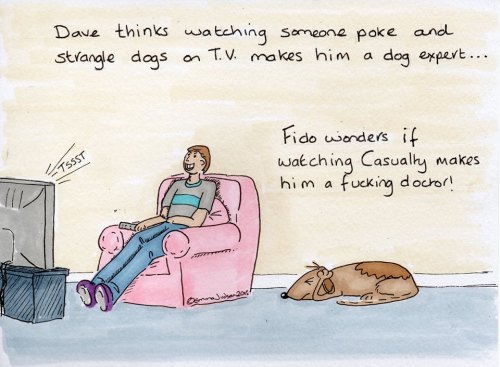
Lycan was a monster(I know there are worse dogs out there but he was the naughtiest dog we have and we have been keeping dogs for about 14(me) and 21(bf) years), doing whatever he can to defy us, running away when he’s off leashed and doing everything we do not want him to do. I went to do a little research and from what it seems from his behavior, he wanted to “dominate” us. We had to show him who’s “alpha” in order for him to listen. We did what the internet told us; pin him down, smack his snout when he bites etc. Those didn’t work so we decided to work with a trainer. What we liked(note the D in liked) about the trainer was that he used punishment and back then, we believed “He’s naughty, he deserves to get punished”. So when we started classes, we were told to put him on the choker. Wow, it worked “wonders”. He stopped pulling, we got him to do tricks on command. But after a few weeks, we realised it stopped working. We could tug as hard as we could and he would not listen. Why? He grew immune to the discomfort the choker used to cause him. We consulted our trainer and he recommended a prong. We tried it on him and yup, back to working “wonders”. The prong continued working it’s “wonders” for months.
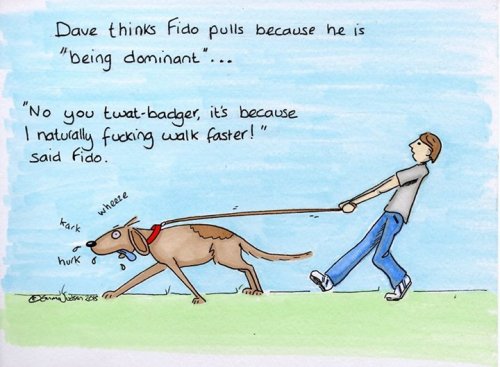
We got Lexie the day Lycan graduated from class. She was fearful and nervous. I tried training her the way Lycan was trained but after a few weeks, I realised that it’s not going to work. She gets so afraid whenever we “correct” her and she would cower and refuse to move. It was then that got me doing more research on training methods and it was then I started learning about positive training and the use of the clicker. With that, she start learning new tricks and boy did she learn fast! She can learn simple tricks in about 10mins. I was super pleased with the outcome.
When we started Lexie on positive training, we were still training Lycan using the methods we learnt. He was still naughty and we thought he was just being defiant. I use to compare how much “better” Lexie is compared to him.
A few months back, I read somewhere that these aversive training made the dog find you “uninteresting” because you are the source of discomfort. It kind of woke me up and made me realise that maybe that is why Lycan doesn’t listen. Not because he’s not smart, but maybe because he finds everything else better than us. I told the bf we should start training him with positive reinforcement as well. The bf was a little skeptical at first because he was “fine with where Lycan is now”. (We had the mentality of “different dogs, different training methods”, that Lycan can only be trained in such method forever.) But after a little persuasion and a ton of reasons, he decided to give it a try! At first, Lycan took advantage of the new ways (Lycan: yay, I can do whatever I want without feeling pain). It was driving us(especially me) crazy that we wanted to go back to his old training methods. But we did not give up and thank goodness we didn’t because ever so slowly, we can see a bit of improvement. He would return when we call him back, he would listen and do what he is told.
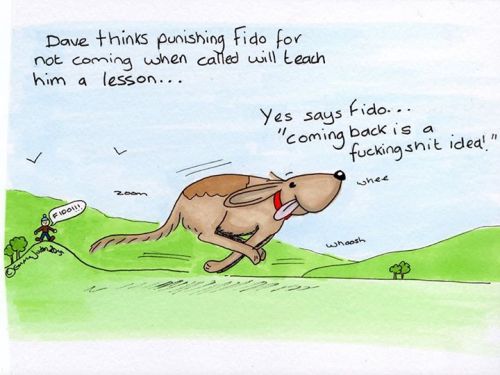
About six months back, we decided to remove the prong collar. He proved to us what we thought about him was wrong and that he CAN be good. During one of Lexie’s training class, Lycan was there and the bf decided to train him as well and let him off leashed the whole time. He started playing with the other dogs there. The bf called him twice and he came running back. We use to have to physically drag him off other dogs to get his attention and stop him from what he was doing. And a few months back, the bf taught Lycan “cop-cop” in one training session. It took me a few sessions and I thought Lexie was good. Lycan took ONE session.
We love how positive training is working for both of them and wished that we had known about it from the start.
Going back to my title, I’m sure most of you have heard that term as it has been around forever. But in this century, who still believes in such a thing? Even parents have stopped hitting their kids(the older generation should know). Parents instead would take away their electronic devices or toys and would only give them back when they get the desired behavior from their kid.
Positive Reinforcement:
Punishment? Isn’t that a negative thing? My interpretation of negative punishment is when you put two negatives together, you get a positive! YAY MATHS! The way negative punishment is done is that you remove the source from the dog. For example of the picture below. When the dog is pulling, by using negative punishment, you stopped the dog from getting what he wants which is moving forward. Over time, the dog will learn if he wants to move forward, he shouldn’t be pulling – delaying good stuff to decrease the behavior.
Positive reinforcement is by rewarding the dog when he is walking on a loose leash – adding good stuff to increase the behavior. Over time, the dog will learn walking loose leash = yay, yummy treats!
You can read more here.
I’ve learnt aversive training and I’m learning positive training, why not use both?
Since I have of a way to train my dog without having to inflict pain or discomfort, WHY would I want to do it? When I say discomfort, I don’t mean just physical discomfort. It can be mental discomfort when I raise my voice or by using a negative tone.
For example, those times you use your voice to tell your dog off when it does something wrong and it gives you the “guilty” look. Why would you want to put them through that? Instead of having to reprimand them for doing something wrong, why not just prevent it? If it’s not preventable, instead of telling the dog what it can’t do, why not tell it what it CAN do?
What our trainer, Michelle from Pup Pup N Away, taught us was instead of saying “No”, why not tell it what to do? Example, dog is biting your shoe. Instead of saying “No”, why not say “Leave It” and give it something it can bite. At first I didn’t get it but she explained to the bf and I and gave the chair example. Put a chair in the middle of the room, I will think of what I want the bf to do with the chair and not tell him. For every wrong move, I say “No”. Eventually, the both of us will get frustrated because he doesn’t know what I want and I’m not getting him to do what I want. So instead of saying “No”, why not just tell him what to do from the start? He’s happy, I’m happy.
“BALANCED” TRAINING: BALANCE IS GOOD, RIGHT?
“Reward the good, punish the bad.” When faced with two extremes, we often tend to drift toward the middle, trying to find a balance between the two. To many dog owners this seems to be the most reasonable approach; No extremes, just a middle ground between the two methodologies. However, there can be many reasons for “bad” behavior that have nothing to do with disobedience. If you believe that punishment is necessary in SOME instances, is needed for SOME behaviors, or that SOME dogs/breeds need punishment, ask yourself these questions before punishing the dog:
1. Just how mad ARE your training skillz? Have you ever videotaped yourself during a training session? If you are a dog trainer, have you ever submitted video of a training session to your peers (as I was required to do for one part of my certification). If not, you can’t really know how good your skills are…or aren’t. Granted, it’s not easy to watch, but once you curse yourself for getting off your diet or vow never ever wear those jeans again, you can start to focus on your training skills and look for these common mistakes:
- Unclear and/or inconsistent cues. Is the cue the same each time? Do you only say your cue once, or do you chant “Down, down, lie down, ah-ah! DOWN.” Do your visual cues (hand signals) look the same each time? Are you mixing verbal cues (commands) with visual cues (hand signals, pointing, etc.)? Are you giving cues before the dog has learned the complete behavior?
- Poor timing. Are your rewards delivered at the exact moment the dog performs correctly? If not, how many seconds pass between the behavior and the reward? Is the dog doing something else by the time he gets rewarded? Consider learning how to use a marker to improve your timing.
- Inconsistent Rewards. Not only is there more than one type of reward, there are many different ways to deliver rewards. Can’t think of any? Then you still have more to learn.
2. Is the dog exhibiting signs of stress that could be causing bad performance? This is a big one. If you don’t know how to recognize common stress signs, you could be missing a lot. Fear, anxiety, and over-arousal/over-excitement are all forms of stress. Stress affects behavior in dogs, just as it does in humans.
3. Do you know multiple ways to get the same behavior? Just because 9 out of 10 dogs respond to your method of teaching “heel,” Dog #10 may not. Are you familiar with – and proficient in the use of – the following methods to teach different behaviors?
- Lure
- Shape
- Target
If not, it’s time to brush up on your dog training knowledge and skills before administering punishment.
Gotten this off 4PawsUniversity.
I have to say it but using aversion is an easy way out, a lazy way of “training”. Don’t like what the dog does? Punish the dog. It’s a boring way of “training”. Every undesired behavior leads to a “punishment”. With positive reinforcement, I’ve to always come up with new ideas to remove undesired behavior. Don’t want the dog to jump? Get it to sit instead of yanking/pushing/kneeing the dog off. When they sit, they get a reward. You’re happy, they’re happy.
I know everyone has different opinions on this but if your argument is reasonable, I’ll accept it. But it’s when someone who tries and make a point base on what they see on tv is what really grinds my gears. I am not perfect, I do not know everything but I do my own reading and I have experience in doing BOTH types of training and I have gone for classes for BOTH training methods. Why insist one type of training is better than the other if you’ve only tried one method? You may say Positive Reinforcement doesn’t work with your dog. Did you ever stop to think that YOU might be the issue and not the dog? That you’re not training right/using the wrong technique and that is why the dog isn’t learning? Or did you expect an immediate change in behavior when you start on R+? Some dogs learn faster than others. That doesn’t mean that R+ “doesn’t work”.
“If we can teach a Killer Whale to pee in a cup, you can train your dog without the use of punishment.”
~Ted Turner, SeaWorld
Like they always say, there are no bad dogs, only bad owners.
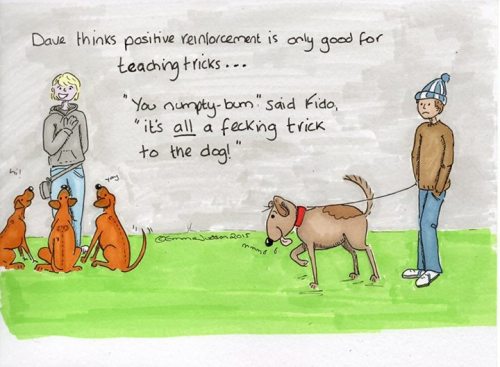
I would like to thank the very awesome Foul Mouth Fido for allowing me to use his pictures for this post. Do check him and his “numpty-bum” owner at Foul Mouth Fido!
I hope that if you had any mix thoughts and feelings about Positive Reinforcement, this can somehow help you get a better understanding on it.

Happy, positive trained Lycan and Lexie to end the post.
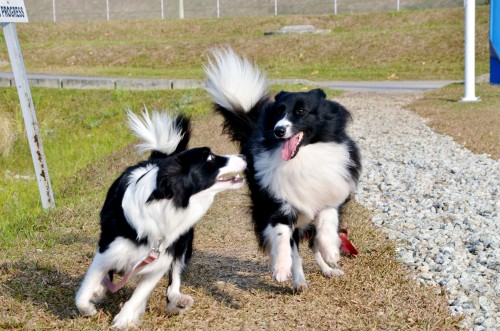
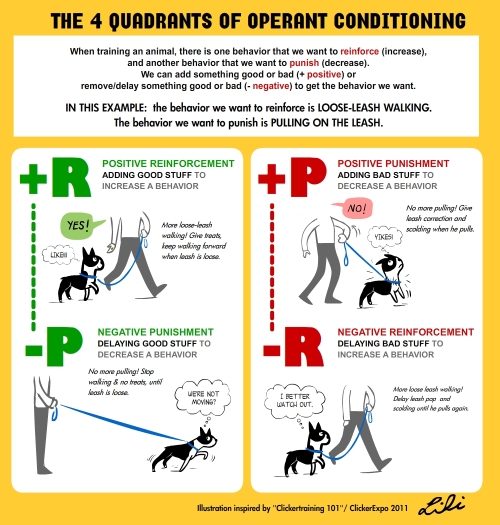
It’s easy to dabble a little and then think, nah, it doesn’t work. But the dog listens when I punish him so I’ll do both.
But if you have to fall on punishment, and I re-quote your 4paws quote, lol – “Just how mad ARE your training skillz? Have you ever videotaped yourself during a training session?”
I videotape myself all the time and I still see problems. Hah! Get a qualified, professional trainer or you are just not giving positive training a fair chance.
Here’s how to find a positive dog trainer in Singapore – http://weliveinaflat.com/blog/positive-dog-trainer-in-singapore/
LikeLike
Hahaha thanks for the link! Now people don’t have an excuse of not being able to find a trainer.
LikeLike
They could always go to Pup Pup whom you linked 😉
LikeLike
I would never hit Popo although I think I would have no qualms slapping a naughty kid. Lol. I do raise my voice though, when she’s CLEARLY being stubborn. 🙂
LikeLike
Haha we try not to raise our voice too.
LikeLike
Well said! Russell started to lose his trust in us and became suspicious of us when we started out using aversive techniques, made me sad that it was affecting our relationship. Gotta keep working on R+!
LikeLike
I really enjoyed reading your story about coming from one method to the other. We feel SO bad for the times we would yell at Barkley when he was a puppy and we didn’t know better. UGH. I don’t even want to think about it!! We only use positive reinforcement with Zelda (and of course Barkley, too). Her only real punishment is “time out” when we put her in a bathroom alone. This is only for extreme cases and was mainly for biting/growling. But honestly, it is just removing the reward (being with us, playing, etc.) so it is negative punishment. It was the only thing that got through to her when she was so young and she didn’t respond to “leave it” or “uh-uh” yet. The clicker was huge for us. Looking back, I actually don’t even know how I taught Barkley anything without it! Lol! Thank you for posting this. It actually makes me want to share our training experiences.
LikeLiked by 1 person
Glad you made the change! We did too and I still feel bad just thinking back. Hahaha yes we do time outs as well and sometimes when we catch Lycan doing something wrong, he puts himself in a time out. 😂 Do share! We would love to hear about it too. 🙂
LikeLiked by 1 person
Fantastic post and a great example of how being open to new ideas can sometimes bring some pretty amazing results. Thanks for helping to spread the word about R+
LikeLiked by 1 person
I have to thank Lexie for that! If she didn’t have an opposite temperament from Lycan, I might never even want to look up other training methods. Guess that dogs really do come into our lives for a reason. 🙂
LikeLike
So much love for this post! I think “crossover” trainers are one of the most important voices for positive reinforcement because it proves that people can change. I used a prong collar on my first dog as well but now focus on reward-based training. I co-host a monthly positive pet training blog hop, I hope you’ll join in sometime!
LikeLiked by 1 person
Thank you! Yes I’m glad to see that there really are others out there who are switching to positive training as we’re getting alot of feedback that positive training doesn’t work. If we can do it, I bet with time and patience, everyone else can too. We will definitely check it out! 🙂
LikeLike